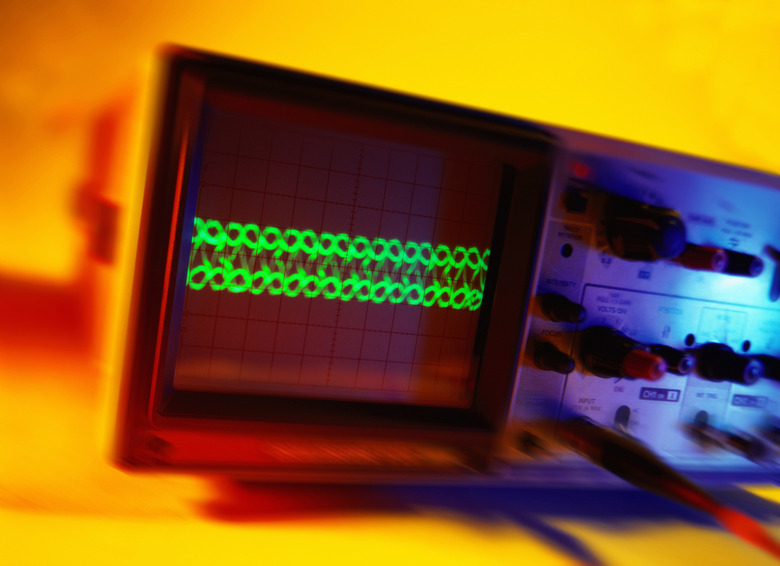How To Calculate DC Offset
Electricity is the flow of electrons through metallic wires. There are two types of electricity and these are known as alternating current (AC) and direct current (DC). Often these two types of electricity are merged which produces an AC signal with a DC offset. These mixed signals are complex and can be measured using an oscilloscope. An oscilloscope is a device which is used to visualize electrical signals and it consists of inputs, a number of controls and a screen.
Step 1
Switch on the oscilloscope. Vary the vertical offset control to center the oscilloscope trace onto the 0V mark.
Step 2
Plug the electrical signal into one of the oscilloscope inputs. There are normally two oscilloscope inputs and these are labeled "A" and "B." Switch on the relevant input by pressing the "A" or "B" button.
Step 3
Modify the volts/division. This changes the vertical scale on the screen, and the number of volts each vertical division represents. Change the setting until the vertical component of the signal is within the screen limits.
Step 4
Modify the time/division setting. The time/division changes the horizontal scale on the screen and the amount of time each horizontal division represents. Modify the setting until an oscillatory signal is clearly seen.
Step 5
Measure the DC offset. Count the number of vertical divisions between the zero line on the oscilloscope and the centerof the oscillatory signal. Multiply the number of vertical divisions by the volts/division setting in order to obtain the DC offset.
Cite This Article
MLA
Markings, Samuel. "How To Calculate DC Offset" sciencing.com, https://www.sciencing.com/calculate-dc-offset-8716769/. 24 April 2017.
APA
Markings, Samuel. (2017, April 24). How To Calculate DC Offset. sciencing.com. Retrieved from https://www.sciencing.com/calculate-dc-offset-8716769/
Chicago
Markings, Samuel. How To Calculate DC Offset last modified March 24, 2022. https://www.sciencing.com/calculate-dc-offset-8716769/
